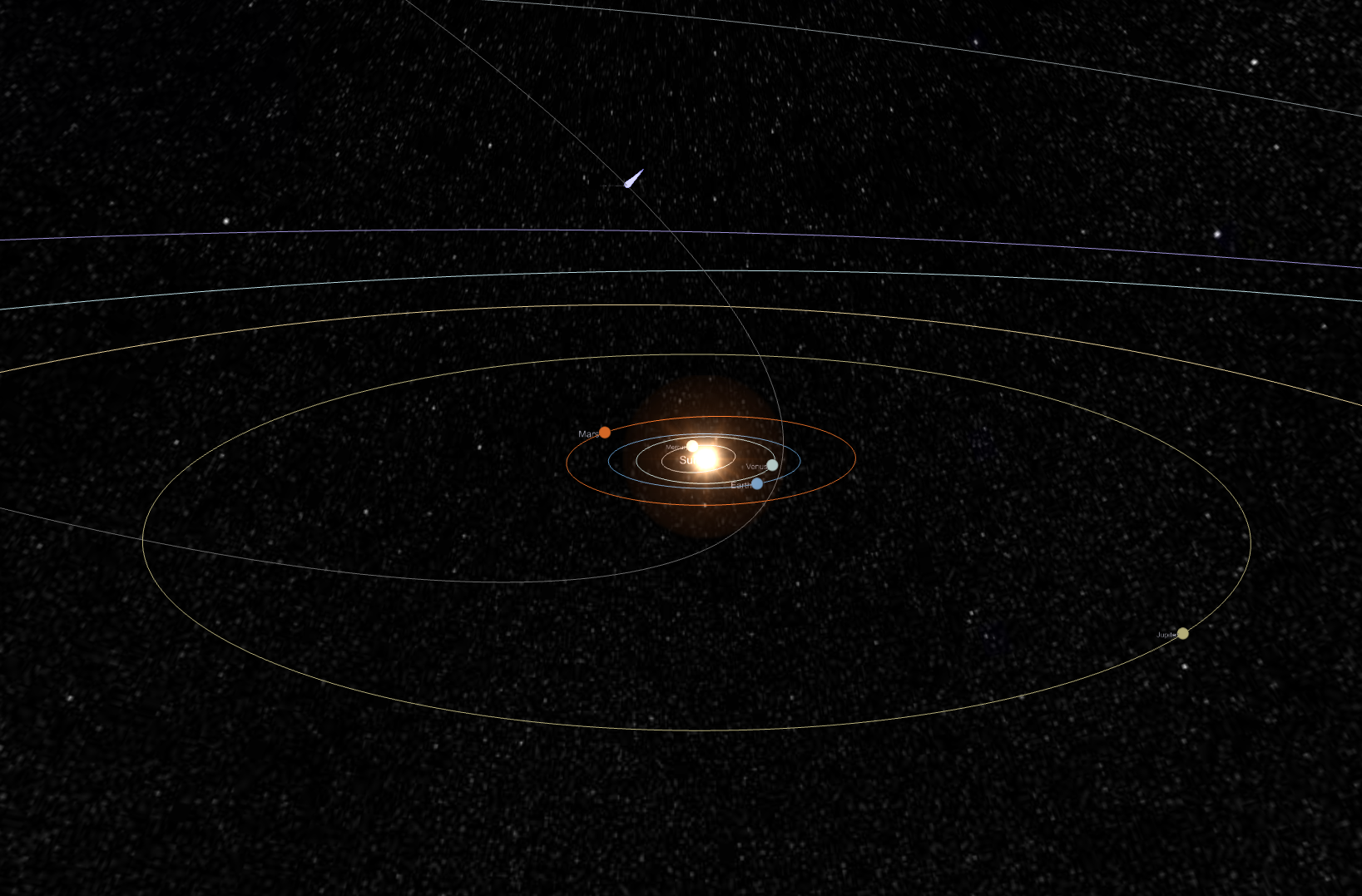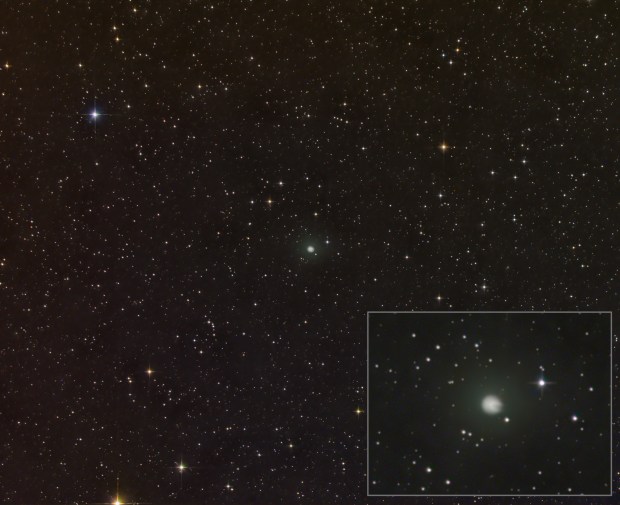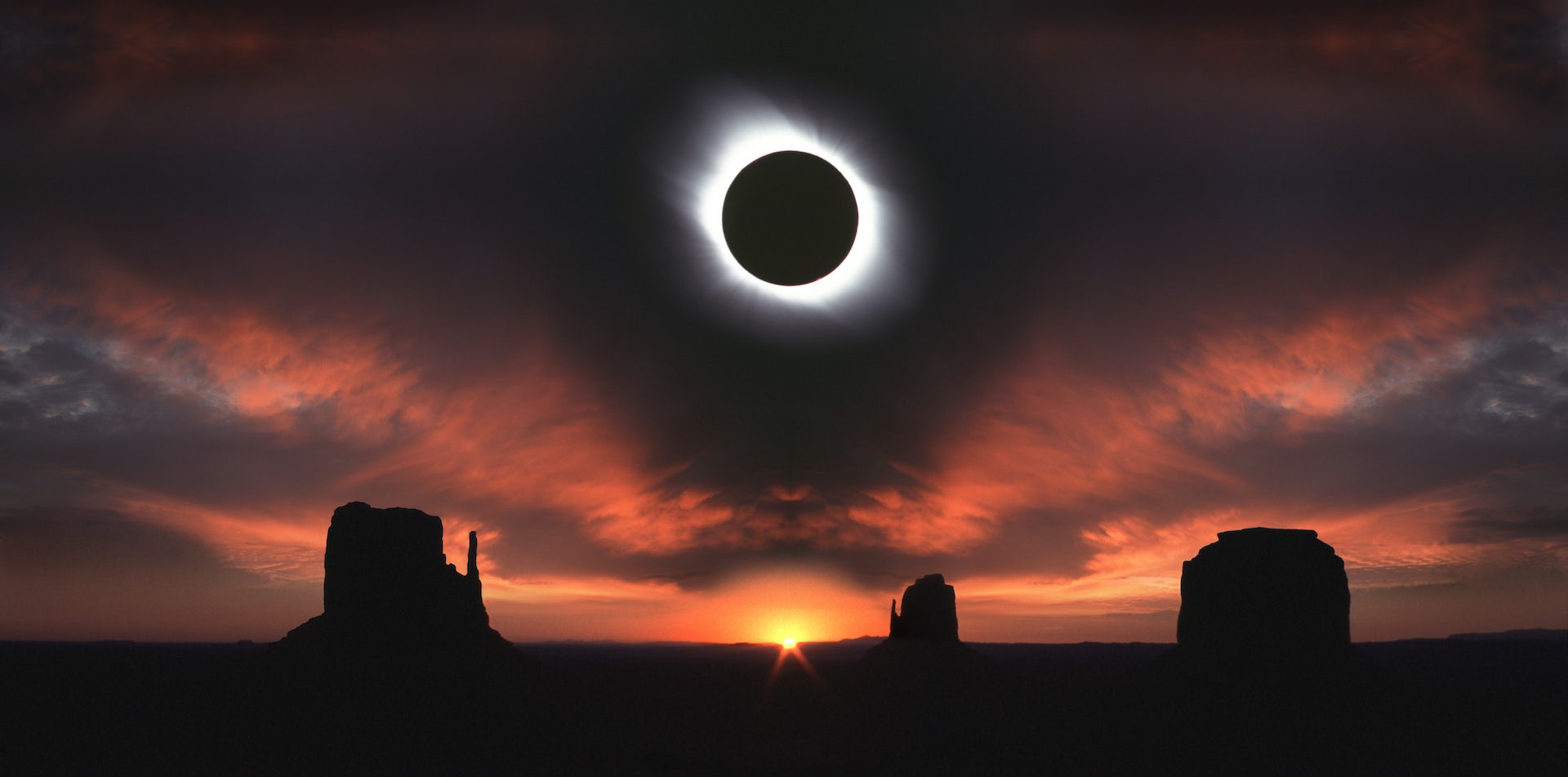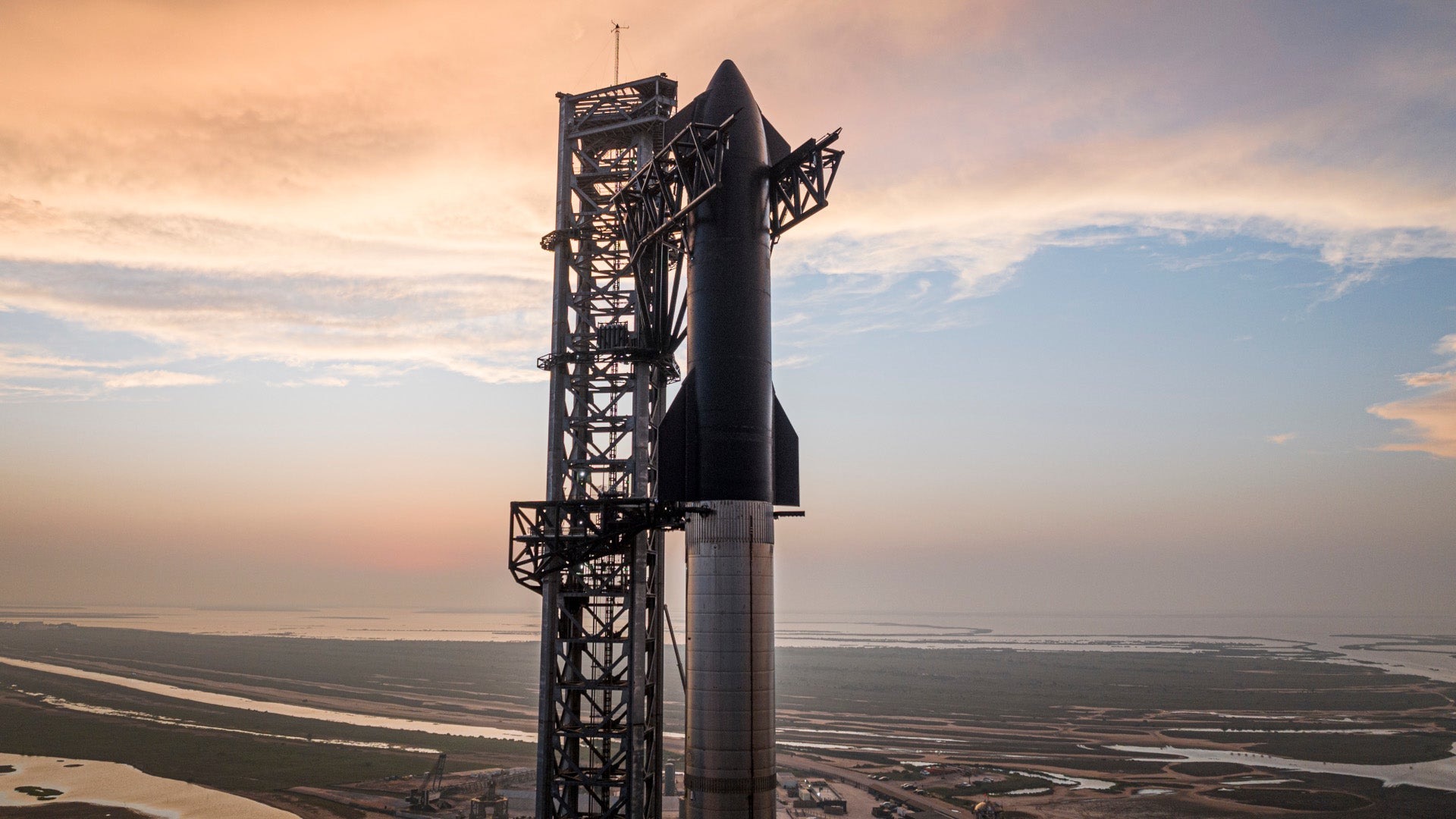Comet Pons-Brooks underwent a second outburst in early October 2023, once again developing “horns,” as captured here while it was in Draco. Credit: Chris Schur
(Editor’s note: This article was first published in October 2023.)
Comets have gotten a lot of press this year, but not all of it good. In particular, numerous headlines have popped up about a “Devil Comet” that’s bigger than Mount Everest on its way toward Earth — but what’s really going on? Let’s take a step back and dissect this devil and whether or not you should be worried (spoiler: you shouldn’t!).
The so-called Devil Comet has a much less terrifying name: Comet 12P/Pons-Brooks. This short-period comet orbits the Sun once every 71.2 years, similar to the famous Halley’s Comet. (For the record, any comet with a period less than about 200 years is considered short-period.)
This comet is not a newcomer to the solar system scene. We’ve known about Pons-Brooks ever since 1812, when comet hunter Jean-Louis Pons spotted it at 4th magnitude. But observations of the comet weren’t precise enough to predict exactly when or where it would return, so it was rediscovered in 1883 by William Brooks. More modern astronomers, working backward, think maybe the comet was recorded on previous passes, too, as early as 1385.
Why do we think it’s bigger than Everest? (Mount Everest, for the record, is 29,031.69 feet [8,848.86 meters], or 5.498 miles [8.849 kilometers] tall.) Well, determining the size of a comet is difficult without directly observing it via spacecraft or radar, but 2020 paper in Research Notes of the AAS estimated from its brightness at the time that its nucleus — the chunk of ice and rock that makes up the comet — is some 10.5 miles (17 km) across. Yep, that’s bigger than Everest, though they warn this is likely an overestimate because the method they use makes it hard to tell exactly where the nucleus stops and the coma of gas, ice, and dust coming off the comet’s surface begins.
Still, even overestimating its size does mean it’s still a whopping big comet! But Halley, for the record, is just about the same size, some 9.3 miles (15 km) on its longest side — and we know that one for sure, because we’ve visited it with spacecraft.
The ‘Devil Comet’ horns, explained

Why is Pons-Brooks being called the Devil Comet at all? Well, in late July, the comet underwent an outburst, blowing off a bunch of gas and dust and brightening by about 100 times, jumping overnight from magnitude 17 to magnitude 12. Such outbursts are random, unpredictable, and not-entirely common, though researchers have noted that Pons-Brooks in particular has exhibited such behavior before, and several times per orbit.
That outburst caused the coma to distort into a horseshoe or horned shape, with a dark center and bright wings or points. Hence, many media outlets nicknamed it the Devil Comet. (Some also called it the Millennium Falcon comet, after the ship in Star Wars.) After the outburst, the comet settled down again and its brightness remained steady until earlier this month, when it outburst again, bringing the horns back.
Astronomers aren’t entirely sure what’s causing the horns, but they think it could be due to the comet spewing gas and dust unevenly. Maybe there’s one area of the surface that isn’t blowing off steam, so to speak, so it remains dark while the areas to either side of it are bright. Or perhaps it’s a shadow effect, where denser material or even topography at the center of the comet appears to block some of the bright material behind it from our point of view. Whatever the reason, it’s scientifically interesting because it’s intrinsic to the comet and its unique structure. But it’s certainly not malicious!
The ‘Devil Comet’ is no danger to Earth
In addition to making it sound like an evil horned beast, sensationalized headlines can also give the impression that Pons-Brooks is a real danger to Earth. And sure, it is heading our way… ish. But let me explain why that’s really not a concern.
When Pons-Brooks rounds the Sun at perihelion, it does so from a distance of 0.8 astronomical unit (74.4 million miles or 119.7 million km — 1 astronomical unit [AU] is the average Earth-Sun distance, so Earth is 1 AU from the Sun). That’s pretty close, and inside the orbit of Earth, yes, but not even as close as Venus, which lies just over 0.7 AU from the Sun.
As Pons-Brooks comes into and then flies out of the inner solar system, you might think it has to cross the orbit of Earth to get there. But you know what? It doesn’t!
Remember that space is three-dimensional. And while all the planets in our solar system orbit the Sun in a relatively flat plane, comets don’t have to follow that rule. Pons-Brooks has a highly inclined orbit that is essentially bringing it down from above the ecliptic (that plane in which the planets orbit) as it rounds the Sun. So, Pons-Brooks will pass between the orbits of Earth (on the outside) and Venus (on the inside) before heading out of the inner solar system again. It will not ever cross the orbit of Earth and can’t pose the least bit of danger via impact. The closet it will come to our planet on this orbit is about 1.5 AU in June 2024. That’s one and a half times the distance of Earth from the Sun! So, absolutely nothing to worry about.
It will be visible during the total solar eclipse
The last time Comet Pons-Brooks passed perihelion, the closest point to the Sun in its orbit, was 1954. The next will be next year, on April 21, 2024. That’s just two weeks after the April 8 total solar eclipse that will cross North America — and we now know that Comet Pons-Brooks will be in the sky near the Sun during totality. It’s likely to be bright enough to pick up with binoculars, and if it outbursts again, perhaps even visible to the naked eye in the daytime twilight brought on as the Moon covers the Sun. This is a special treat on top of an already exciting event, and one you won’t want to miss.
Comets are not only beautiful, but they offer us the opportunity to study the building blocks of our solar system and the interaction between the Sun and the objects that orbit it. So, the next time you hear about the Devil Comet, you’ll know better — it’s really an exciting and benign visitor that will help make an already once-in-a-lifetime eclipse even more memorable.




